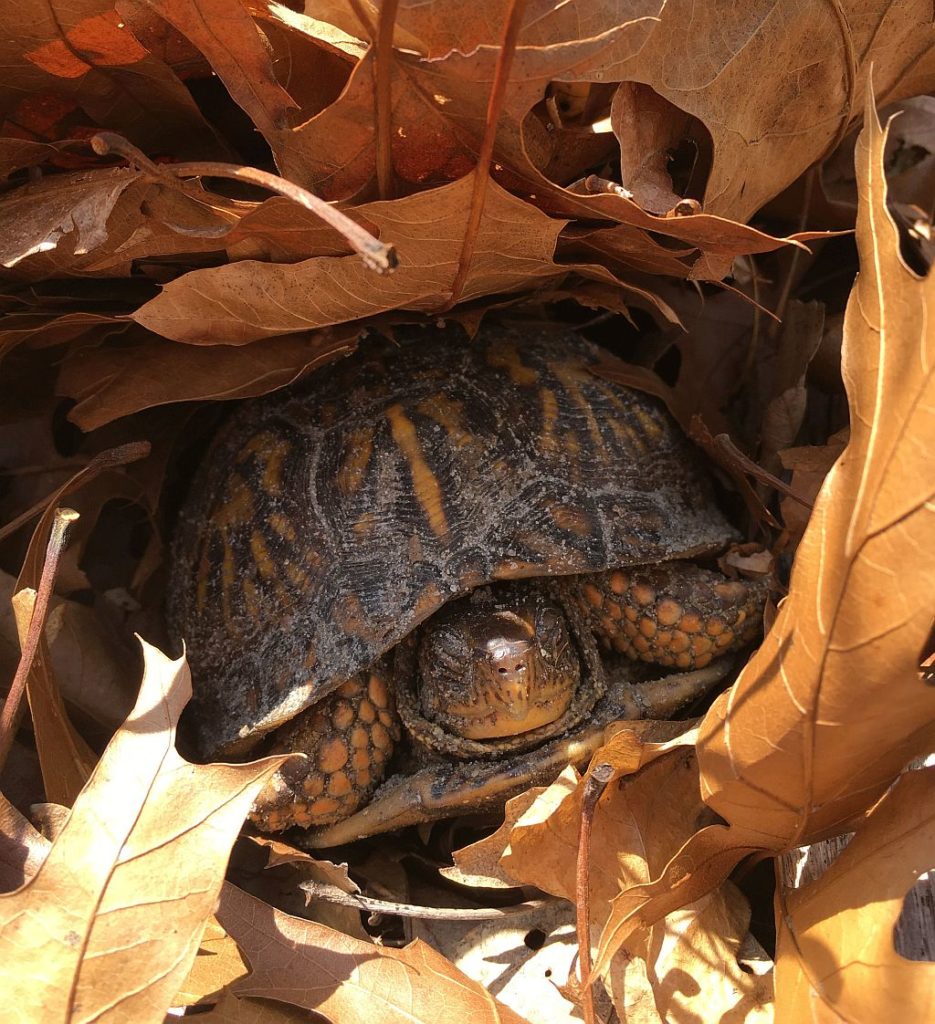Do Eastern Box Turtles Hibernate?
Do Eastern Box Turtles hibernate? It’s a question many turtle owners, nature lovers, and curious minds ask. During the winter months, these turtles become less active and can sometimes appear to be hibernating. But is this actually true? In this article, we’ll dive into the fascinating life cycle of the Eastern Box Turtle and explore if and how they hibernate.

to explain the topic in detail.
Do Eastern Box Turtles Hibernate?
The Eastern Box Turtle is a species of reptile native to the North American continent. It is widely distributed across many states and can be found in a variety of different habitats. One of the most interesting facts about the Eastern Box Turtle is its ability to hibernate, or enter a state of torpor, for extended periods of time. In this article, we will explore the question of whether or not Eastern Box Turtles do, in fact, hibernate.
What is Hibernation?
Hibernation is a state of torpor, or inactivity, that some animals go into during the winter months. During this time, the animal’s metabolism slows down and its body temperature drops. This is done in order to conserve energy and protect the animal from the cold winter temperatures.
Do Eastern Box Turtles Hibernate?
The answer to this question is both yes and no. Eastern Box Turtles will enter a state of torpor during the winter months, but they do not enter a true hibernation state. This is because the Eastern Box Turtle is an ectothermic species, meaning that it relies on external sources of heat to maintain its body temperature. During the winter, the Eastern Box Turtle will seek out warm, sheltered places, such as logs and burrows, to maintain its body temperature.
How Long do Eastern Box Turtles Hibernate?
Eastern Box Turtles typically enter a state of torpor in the late fall, usually around October or November, and emerge from this state in March or April. However, this can vary depending on the climate and temperature of the region. In warmer climates, Eastern Box Turtles may remain active throughout the winter months, while in colder climates, they may remain in a state of torpor for up to five months.
Do Eastern Box Turtles Hibernate Underground?
In some cases, Eastern Box Turtles will seek out burrows or other underground structures to hibernate in. This is done in order to protect the turtle from extreme temperatures and predators. If an Eastern Box Turtle is able to find a suitable underground burrow, it may remain there for the entirety of the winter months.
Do Eastern Box Turtles Hibernate in Water?
Eastern Box Turtles do not typically hibernate in water. Instead, they prefer to hibernate on land, in burrows or other sheltered places. However, Eastern Box Turtles are aquatic species, and they may enter a state of torpor in the water if the temperature drops to a certain level.
Do Eastern Box Turtles Eat During Hibernation?
Eastern Box Turtles do not typically eat during hibernation. This is because their metabolism and digestive system slow down during this time. However, some turtles may still eat small amounts of food during their hibernation period.
Do Eastern Box Turtles Need to Drink During Hibernation?
Eastern Box Turtles do not need to drink during hibernation, as their bodies are able to conserve water. However, they may still drink small amounts of water if they can access it.
Do Eastern Box Turtles Migrate During Hibernation?
Eastern Box Turtles do not typically migrate during hibernation. Instead, they remain in the same area throughout the winter months. However, some Eastern Box Turtles may migrate to warmer climates if the temperature in their current location becomes too cold.
Do Eastern Box Turtles Become Active During Hibernation?
Eastern Box Turtles typically remain in a state of torpor throughout the winter months, only occasionally becoming active in order to move to a new location or find food. However, some turtles may become active more frequently if the weather is warm enough.
Do Eastern Box Turtles Need Access to Sunlight During Hibernation?
Eastern Box Turtles do not need to access sunlight during hibernation. This is because their bodies are able to regulate their temperature without the need for additional heat. However, some turtles may become active for short periods of time in order to warm up or search for food.
Related Faq
Do Eastern Box Turtles Hibernate?
Yes, Eastern Box Turtles typically hibernate during the cold winter months. They may enter into a state of torpor for several days, weeks, or even months at a time, depending on the ambient temperatures and weather conditions. During this period, their metabolism slows down significantly and their physical activity is greatly reduced.
In order to properly hibernate, Eastern Box Turtles need a safe, dry and undisturbed area. They will often burrow into the ground or seek shelter underneath logs, leaves and other debris. This helps to ensure that they are insulated from the cold temperatures and able to remain in a state of hibernation until the weather warms up.
Where do Eastern Box Turtles go when they Hibernate?
Eastern Box Turtles will typically seek out a safe, dry and undisturbed area when they are ready to hibernate. They may burrow into the ground or find shelter underneath logs, leaves and other debris. This helps to ensure that they are insulated from the cold temperatures and able to remain in a state of hibernation until the weather warms up.
In addition to seeking out warm, dry places to hibernate, Eastern Box Turtles will also try to find areas that are well-protected from potential predators. This helps to ensure that they remain safe and secure even while they are in a state of torpor.
How Long Do Eastern Box Turtles Hibernate?
The length of time that Eastern Box Turtles stay in their state of hibernation depends on the ambient temperatures and weather conditions. They may remain in a state of torpor for several days, weeks, or even months at a time. Hibernation can help Eastern Box Turtles conserve energy and survive during the cold winter months.
In order to properly hibernate, Eastern Box Turtles need a safe, dry and undisturbed area. They will often burrow into the ground or seek shelter underneath logs, leaves and other debris. This helps to ensure that they are insulated from the cold temperatures and able to remain in a state of hibernation until the weather warms up.
Do Eastern Box Turtles Eat During Hibernation?
No, Eastern Box Turtles do not eat during hibernation. Hibernation is a period of rest in which the turtle’s metabolism slows down significantly and its physical activity is greatly reduced. During this period, Eastern Box Turtles will not eat, drink or move around much.
In order to properly hibernate, Eastern Box Turtles need a safe, dry and undisturbed area. They will often burrow into the ground or seek shelter underneath logs, leaves and other debris. This helps to ensure that they are insulated from the cold temperatures and able to remain in a state of hibernation until the weather warms up.
Can Eastern Box Turtles Wake Up During Hibernation?
Yes, Eastern Box Turtles can wake up during hibernation if the temperatures rise. However, this is not something that happens frequently. Hibernation is a period of rest in which the turtle’s metabolism slows down significantly and its physical activity is greatly reduced. Typically, Eastern Box Turtles will remain in a state of torpor until the weather warms up.
In order to properly hibernate, Eastern Box Turtles need a safe, dry and undisturbed area. They will often burrow into the ground or seek shelter underneath logs, leaves and other debris. This helps to ensure that they are insulated from the cold temperatures and able to remain in a state of hibernation until the weather warms up.

How You Can Help Turtles Hibernate
In conclusion, it is clear that Eastern Box Turtles do indeed hibernate. They typically hibernate from October to April, depending on the climate and conditions in the area. During hibernation, turtles may not move or eat, but they will still respond to stimuli. By understanding the hibernation habits of Eastern Box Turtles, we can help ensure that they are able to survive and thrive in their natural environment.

